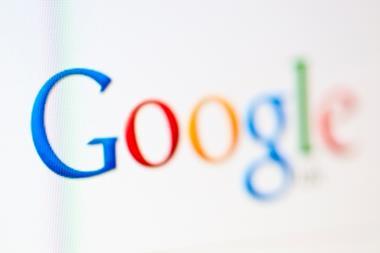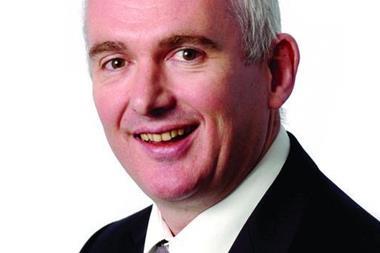The increasing number of affinity deals could threaten some of the insurance industry’s biggest players

Q&A: Jeremy Lefebure, Accenture
The sheer number and diversity of affinity deals that have been signed recently suggest a style of sale that is very much on the up. This autumn alone has seen Allianz provide legal expenses cover for BMW’s motorcycle brand, Motorrad, through specialist broker Devitt Insurance Services. Meanwhile, Hastings has won the contract to issue commercial vehicle insurance for B&Q-owner Kingfisher; while Ageas will underwrite travel cover for John Lewis Insurance.
Yet a hard-hitting Accenture report, co-authored by the managing director of the consultant’s European insurance practice, Thomas Meyer, says that the industry’s biggest players “risk going the way of the dodo”.
The report says: “The danger for the industry is that other, non-traditional companies like retailers or telecoms and car companies could snap up the opportunity and move into the insurance market using low-cost digital distribution and their established customer base … they could capture the most lucrative business.”
The ABI seems quite sanguine over the issue - “the insurance market has always been very competitive”, says a spokesman - but there’s little doubt that the industry was stunned by one particularly powerful new entrant.
Last year Google paid nearly £38m for aggregator BeatThatQuote, a loss making business that nonetheless threw down the gauntlet to large established players like Gocompare.
The Office of Fair Trading was so concerned about such a dominant search company entering the market that it even launched an inquiry into whether this deal might distort competition (see case study).
Implications for motor
Car manufacturers are licking their lips at a European Union directive that demands all cars have built-in ability to record collisions by 2015.
Car makers will almost certainly use this as an excuse to fit telematics boxes, which record motoring habits and then reward young motorists with lower insurance premiums, if they are found to be safe on the road.
Broker iGO4 executive director Tom Cooper says that because the boxes are a “point of sale product” it makes sense for manufacturers to sell them directly to customers through their car dealerships.
“It’s almost like a white goods item, with the customer right in front of you,” he says. “Ford has been doing that in America for a few years now.”
Retailers or telecoms and car companies could move into the insurance market using low-cost digital distribution and their established customer base”
Accenture report
The fear is that there is little that brokers can do to tackle this threat to their businesses, as it is such a straightforward add-on item to a
car manufacturer’s business model. Cooper says the biggest hope is that major retailers and car manufacturers will grow frustrated by the tiny margins in an overcrowded marketplace and flee to concentrate on their better-paying core businesses.
Benalder Consulting managing director Neil Batley insists that he does not envisage any market-changing new entrants for at least two years.
While there are several big name retailers who will inevitably develop an insurance presence - Batley points to supermarket Morrisons as an obvious contender - they will quickly find that they “won’t make a killing” through insurance.
Adopting new technology
Accenture counters that the insurance industry “risks losing the customer relationship to competitors and new entrants eager to step in” and, therefore, being reduced to “becoming simply a product factory”. But, as one industry insider puts it, there is “no sense of a new distribution model” from many of these threats, making the support provided through affinity deals that much more appealing when outsiders discover how little money there is to be made.
“Even though new technology, like telematics, is interesting for new entrants, that doesn’t necessarily stop insurers from doing well and doing affinity-type deals,” the source said.
The key could be, though, to ensure that the industry moves quickly to adopt efficient technology and marketing techniques to directly reach the consumer, rather than wait for someone to type their details into an aggregator. Indeed, the Accenture report acknowledges that insurers like Admiral, E-Sure and Swiftcover have all “undoubtedly benefited from first mover advantage in internet commerce”.
Having the technology means that, a retailer, for example, won’t have to bother developing its own service to meet the insurance needs of customers buying goods online from the company. Therefore, it also will not develop as a threat and, as Accenture puts it, insurers should avoid finding that “others are eating its lunch”.
It’s worrying, though, that the main reason the insurance lunch could be unappetising is that the portions are so small.

Case study: Google
• Comparethemarket welcomed Google’s assault on the aggregator market, saying that the 2011 purchase of BeatThatQuote provided “healthy competition”.
• There were plenty of fears, however, that Google would prioritise the BeatThatQuote website in any unpaid-for search results, prompting a four-month Office of Fair Trading investigation into the potential for market distortion. Google was cleared.
• The US giant is clearly keen to develop its insurance business. In September, a search for ‘car insurance’ via Google would lead to BeatThatQuote appearing prominently in the sponsored advertising spot. As part of a rebrand by Google, the service is now called Compare Car Insurance and appears between sponsored and unsponsored search results.
• Halo Insurance Services founder Ernesto Suarez says that while the Google move is high profile, there is little evidence the company will transform the aggregation model. Insurance, he insists, is still about price. The biggest danger will be if Compare Car Insurance is the site that finds the best quotes.
Talking points …
● Do motor insurers need to tie up deals with car producers to include built-in telematics boxes?
● What will Google’s next move be in the insurance sector? Clearly it is on internet search company’s priority list following the launch of its own bespoke price comparison list.

Q&A: Jeremy Lefebure, Accenture
Q: What can insurers learn from previous mistakes?
A: One of the lessons of the past is that the insurance industry tends to be risk averse and slow to embrace new ideas. It suffers from the fact that it tends to be organised along product lines or functional silos that are ill-suited to focusing on the kind of innovation that benefits the customer. But unless the industry does change, it will find that it is losing out.
Q: Why should insurers embrace the digital revolution?
A: Insurance is better suited to digital than most other sectors. It is an intangible service and has no physical product to move around. People buy it reluctantly and it is a hard product to understand. This makes it perfect to market, distribute and service through digital media.
The insurance industry tends to be risk averse and slow to embrace new ideas … unless it changes, it will find that others are eating its lunch”
Jeremy Lefebure, Accenture
Q: How can insurers engage customers?
A: Instead of waiting for their customers to find better insurance deals on price comparison sites, companies should be proactive in approaching their customers with better offers. This is what mobile phone companies already do by alerting customers if they are not on the best tariff. Retailers do something similar by proposing cheaper alternative products to their online customers in real-time, or matching competitor deals when the customer has unwittingly purchased a basket of goods that could have been obtained cheaper around the corner.





































No comments yet